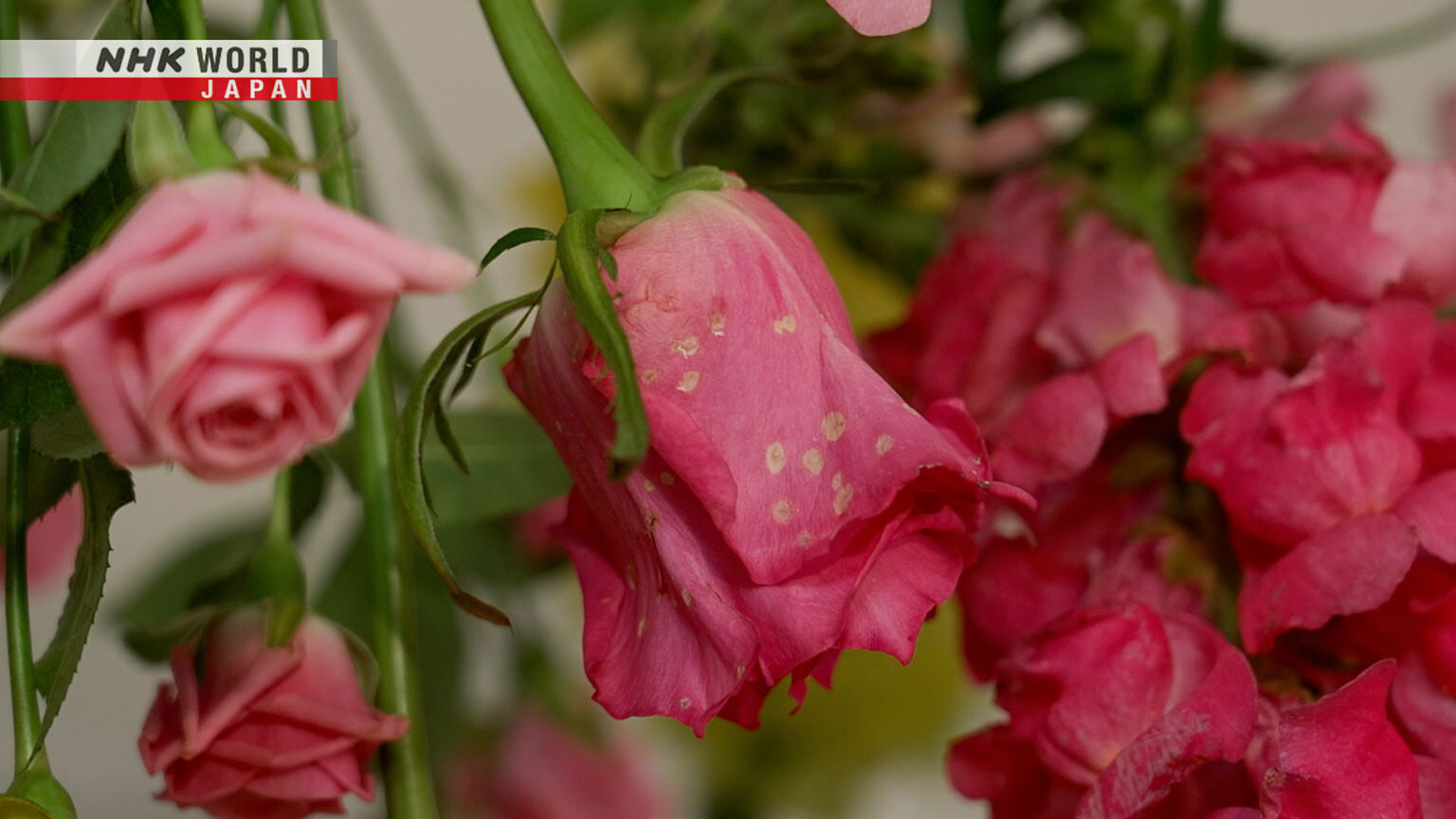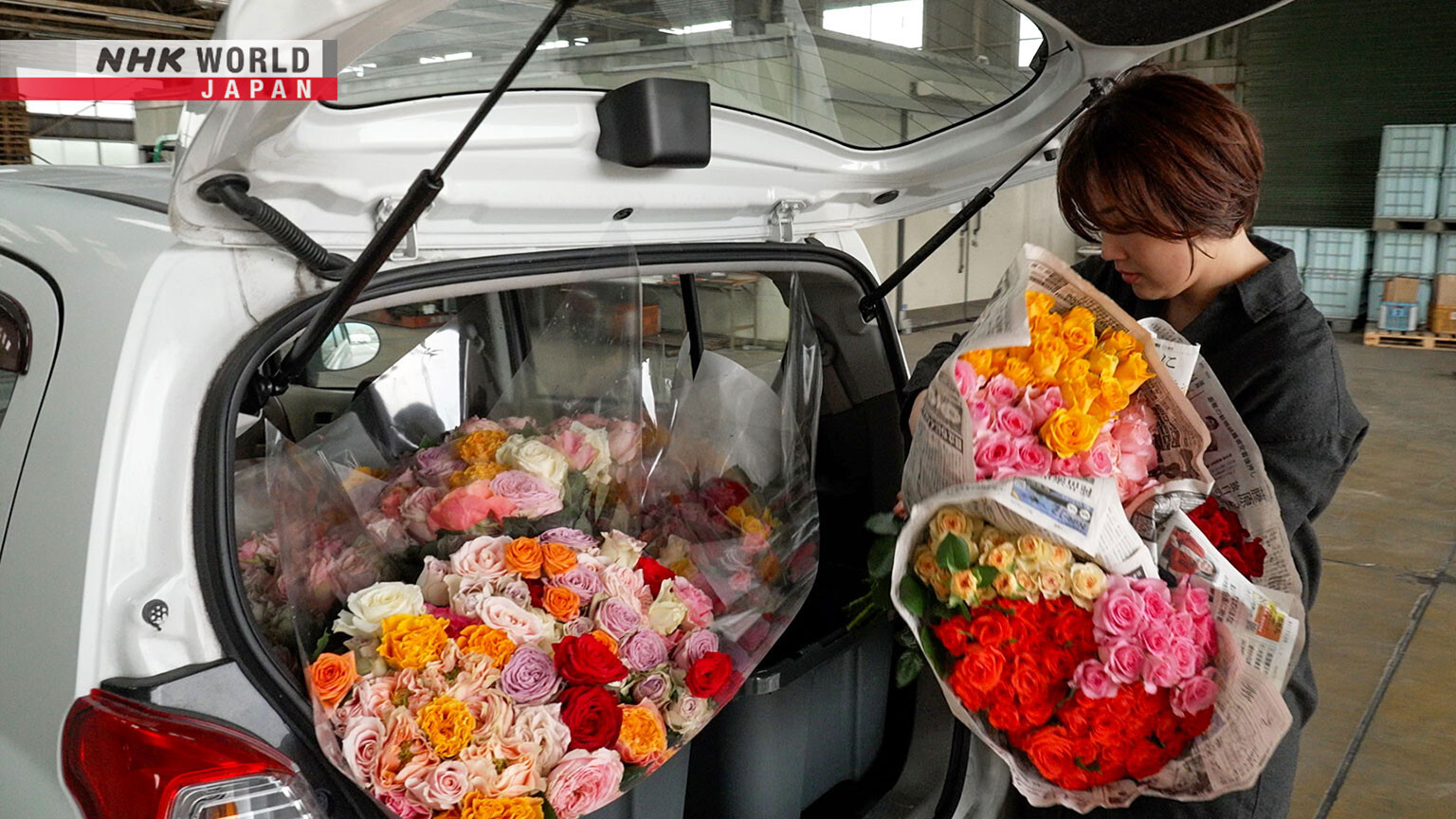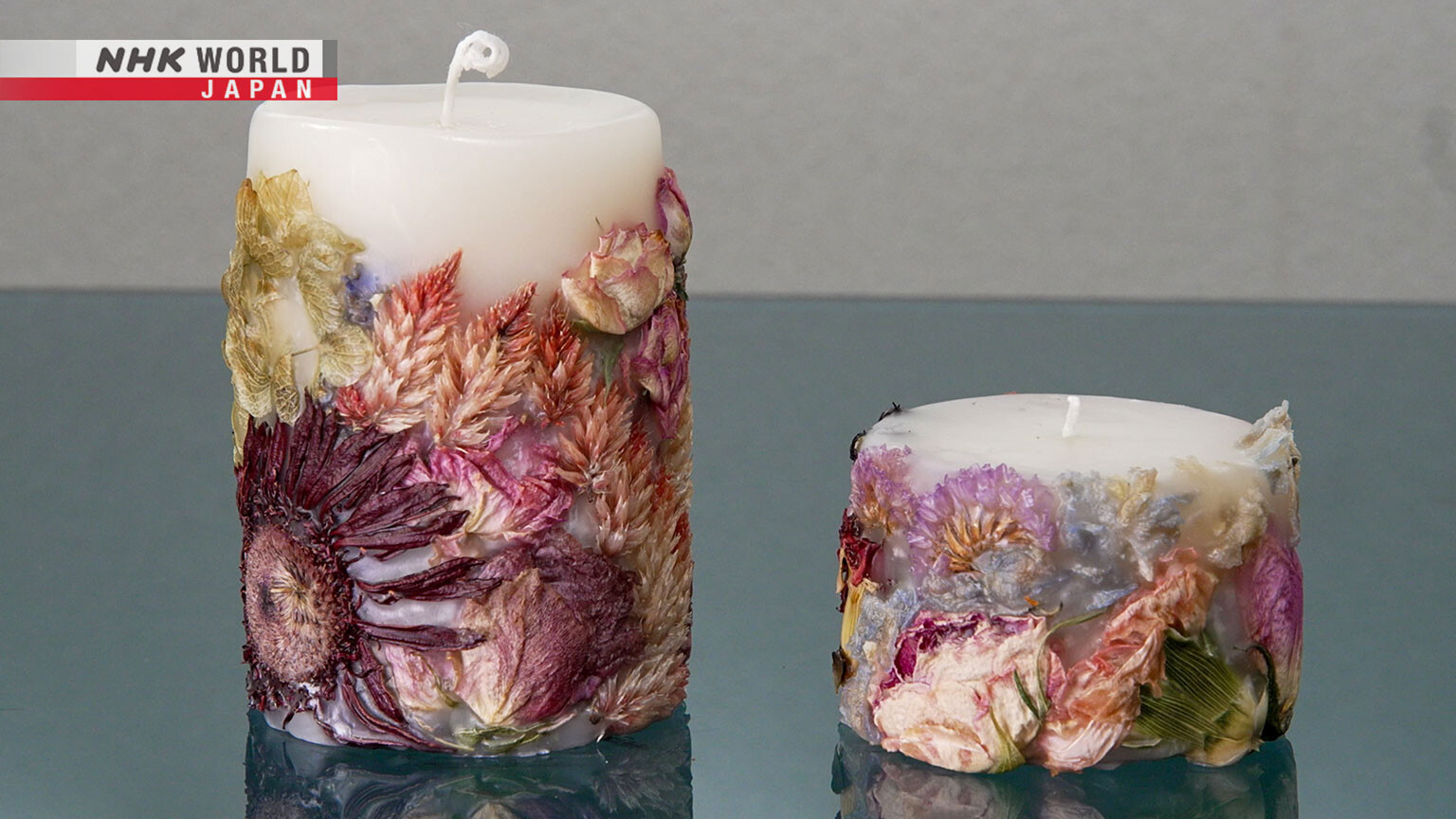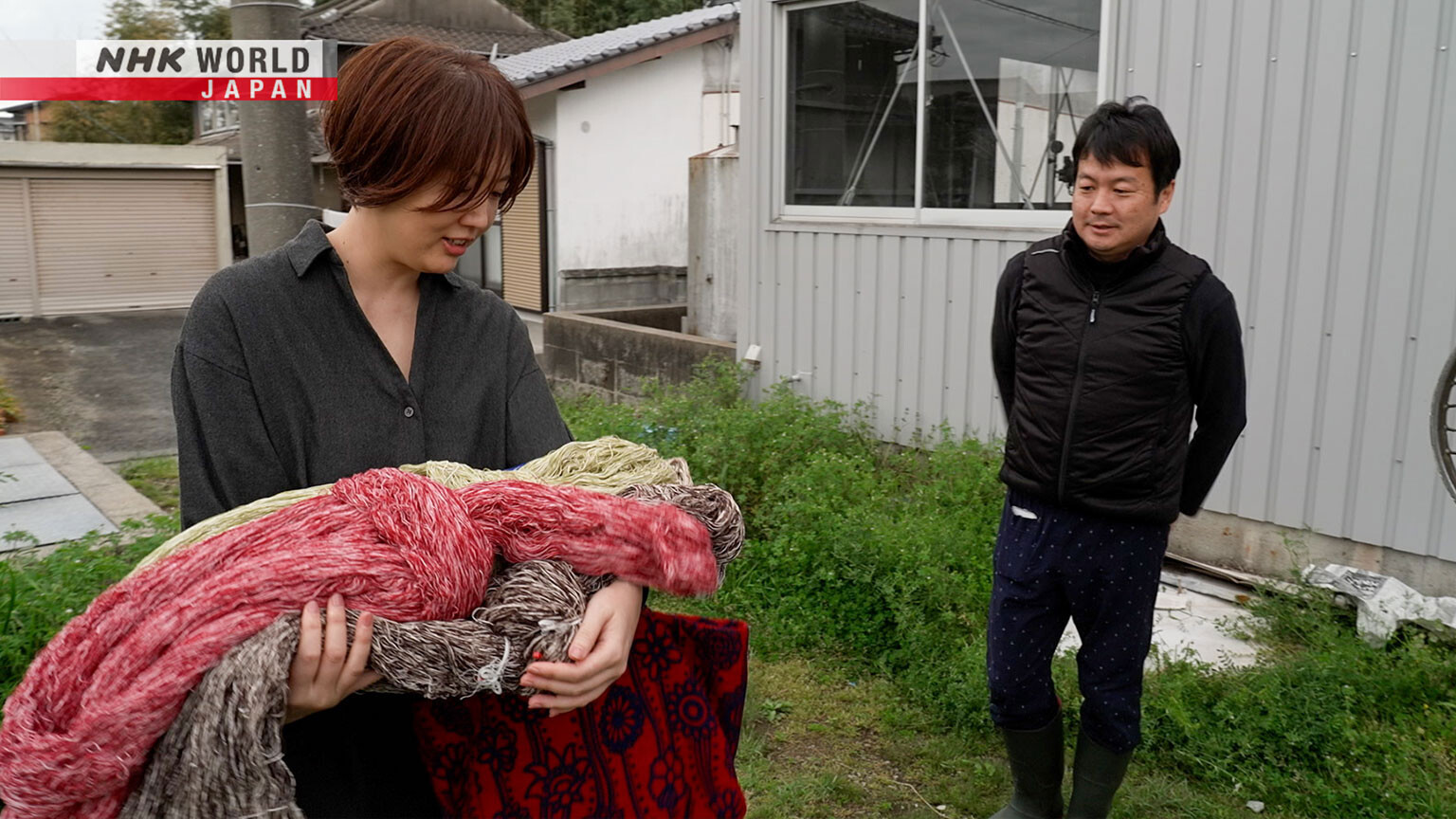Waste Flowers by Candlelight
Some 20% of grown flowers for sale in Japan are discarded as substandard. Nakanishi Megumi uses them to make candles. Just like the flawed beauty of humanity, waste flowers, too, have a unique charm.




Transcript
Since ancient times, the Japanese have believed that a life force resides in all creations.
Valuing and caring for the things we use, a "Zero Waste Life."
Pointing the way to better living for a new era.
Why "substandard" materials...
Every scrap, or bit of waste has value.
Even misshapen, it has beauty.
Fukuoka Prefecture in western Japan.
A leading center for flower production.
Flowers add a touch of color to our lives.
But it's said that some 20% of commercially grown flowers never make it to market.
Working to find a use, for even one such flower, is Nakanishi Megumi.
She's come to the storehouse of a farming cooperative.
Are those discards?
- Yes, these too.
- Thank you.
Nakanishi is here for flowers deemed unfit for sale.
Once a month, she purchases 600 such roses.
There are always colors like red or white, but all of them are considered unsaleable.
They're lovely. I really think so.
Whether for size or quality,
flowers that don't meet market standards must ultimately be discarded.
Nakanishi will take these "waste flowers" to her studio and give them new purpose.
These have badly bent stems.
They're hard for flower shops to use because they aren't straight.
That's why they didn't go to market.
She processes the flowers, hanging them in a well-ventilated space.
They have marks or stains like these.
But to me they're still beautiful.
Hung up for two to three weeks, all moisture is removed, and the flowers are dried.
This is where she shows her true artistry.
A plastic container prepared with a candle in its center.
She packs dried flowers into the empty space around it.
Using discarded flowers, I don't get to choose what I make.
The flowers I have shape the design.
This time it's a pink and purple vibe.
Once the dry flowers are in place, the container is filled with melted wax.
It's left to set for 40 minutes.
As time passes, it whitens and solidifies.
Finally, she adjusts the shape for the best appearance.
All done!
Once "useless" discarded flowers now shine as part of a beautiful botanical candle.
I used lots of roses.
This is Celosia.
I often use it because it adds flow and a sense of energy.
Nakanishi's botanical candles express the living vitality of the flowers she uses.
There are two sizes, large and small, that sell for $32 and $18 USD respectively.
Their full appeal comes through once they're lit.
For fire safety, continuous use of under two hours is recommended.
There's something magical about a flame rising from a candle of flowers.
I could just watch it forever.
I can make these beautiful discarded flowers bloom with life again.
That blossoming is pure joy.
Up until three years ago,
Nakanishi was editor-in-chief of a regional magazine promoting her native Fukuoka.
But during the pandemic, work came to a standstill, and the magazine ceased publication.
We all tried to find solutions, but nothing worked.
As she looked for new employment, her attention was drawn to the issue of flower mass-disposal.
In the pandemic, events like weddings where flowers were used vanished.
I felt sorry for the florists and growers who had to throw flowers away.
It must've been hard for them to do.
I wanted to help somehow if I could.
She took an online course to learn how to make botanical candles.
And in 2022, she began making them using discarded flowers.
I love flowers, and I also loved making things as a hobby.
Being able to do something for others, for the environment, made it more fun.
This area has many flower producers,
so I thought doing something like this could work very well here.
Beyond flowers, Nakanishi also makes use of other local materials.
Today she's paying a visit to a long-standing candle maker in southern Fukuoka.
- Ten kilograms?
- Yes, that's right.
They're all like this, defective and unsuitable for shipping.
Either way I'll melt them down, so marks or flaws are no problem.
Damaged or stained, they're all unfit for sale and slated for recycling by the manufacturer.
Nakanishi purchases them, using the wax to make wicks,
and for the flowers in her botanical candles.
Thanks!
Her next stop, after the candle maker, is a 126-year-old textile mill, only ten minutes away by car.
Here they produce a traditional woven fabric.
- Here you are.
- Thank you!
Nakanishi has come to pick up scrap thread.
The thread is used in the dyeing process.
But in the past, once it had taken on color, it had no further use and was discarded.
This yellow is darker or lighter in places.
That natural variation is interesting.
Seeing the value in this once useless thread,
Nakanishi has been purchasing it for two years now.
I always thought it could be used.
We're grateful for her work, she's a valuable partner.
She'll use the thread to decorate candles.
I thought that the candlelight shining through the gaps would look beautiful.
It's done.
The color variations in the thread are a visual delight.
Finding use for local specialty products is another of her aims,
a desire she took from her previous occupation.
Working at the magazine,
I got the impression that even locals knew little about the area.
I don't have much influence, but I do what I can to help.
In addition to the things she creates herself,
she also works to promote ways for others to make use of flowers that aren't fit for sale.
Alright everyone, choose your flowers.
This workshop is held once a month.
Today they're making interior decorations, featuring scented candles and dried flowers.
- Very good!
- Really?!
It's amazing seeing everyone immersed in the process of making things,
with no thought that this is waste material.
It really makes me smile.
It's surprisingly easy to do.
Being able to make such lovely things is absolutely fantastic.
So cute!
We humans are never perfect.
We get confused, we make mistakes; that's how we live our lives.
Nevertheless, we're all beautiful. That's how I see these flowers too.
I hope to make people more aware of the flower waste issue,
and inspire them to do something.